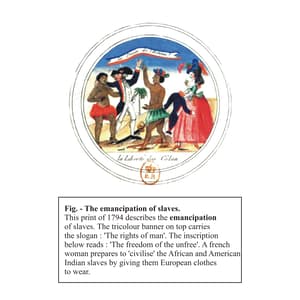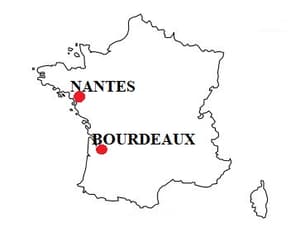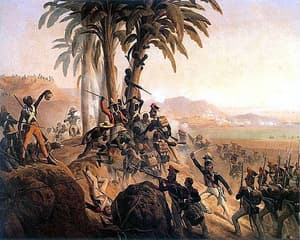Napoleon reintroduced Slavery.
Important Questions on The French Revolution
Which of the following statements are true for eighteenth-century France?
I. There was much criticism of slavery.
II. The National Assembly feared opposition from businessmen who were dependent on the slave trade.
III. Plantation owners understood their freedom as including the right to enslave Africans.
IV. The Convention of legislated to free all slaves in the French overseas possessions.
Record your impressions of this print. Describe the objects lying on the ground. What do they symbolise? What attitude does the picture express towards non-European slaves?

Match the items of column A with the corresponding items of column B and select the correct choice:
Column A Column B
1. Livre i. Group of persons invested with special functions in the church.
2. Clergy ii. A tax levied by the church, comprising one-tenth of the agricultural produce
3. Taille iii. Currency in France discontinued in 1794
4. Tithe iv. Tax to be paid directly to the state

What is the significance of these two places in the context of slave trade in seventeenth century France?

Analyse how events in the French colony of St Domingue, including the slave rebellion and the abolition of slavery in , impacted the indigo plantations and the plantation economy in the Caribbean islands during the eighteenth century with reference to the above image.

